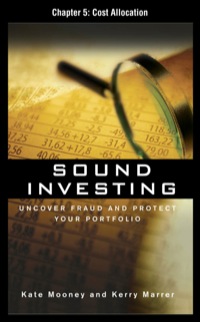Miller Toy Company manufactures a plastic swimming pool at its Westwood Plant. The plant has been exp by its June contribution format income statement below: Flexible Budget $ 235,000 Actual $ 235,000 Sales (5,000 pools) Variable expenses: Variable cost of goods sold Variable selling expenses Total variable expenses Contribution margin Fixed expenses: Manufacturing overhead Selling and administrative Total fixed expenses Net operating income (loss) 71,350 13,000 84,350 150,650 86,370 13,000 99,370 135,630 62,000 77,000 139,000 $ 11,650 62,000 77,000 139,000 $ (3,370) *Contains direct materials, direct labor, and variable manufacturing overhead. Janet Dunn, who has just been appointed general manager of the Westwood Plant, has been given instruction control." Upon reviewing the plant's income statement, Ms. Dunn has concluded that the major problem lies in goods sold. She has been provided with the following standard cost per swimming pool: Standard Quantity or Standard Price or Standard Cost Direct materials 3.8 pounds $ 2.20 per pound Direct labor $ 6.80 per hour Variable manufacturing overhead $ 2.30 per hour Total standard cost per unit Hours Rate 0.7 hours 0.5 hours. $ 8.36 4.76 1.15 $ 14.27 "Based on machine-hours. During June, the plant produced 5,000 pools and incurred the following costs: a. Purchased 24,000 pounds of materials at a cost of $2.65 per pound. b. Used 18,800 pounds of materials in production. (Finished goods and work in process inventories are insignifican ignored.) c. Worked 4,100 direct labor-hours at a cost of $6.50 per hour. d. Incurred variable manufacturing overhead cost totaling $7,560 for the month. A total of 2,800 machine-hours was It is the company's policy to close all variances to cost of goods sold on a monthly basis. Required: 1. Compute the following variances for June: a. Materials price and quantity variances. b. Labor rate and efficiency variances. c. Variable overhead rate and efficiency variances. 2. Summarize the variances that you computed in (1) above by showing the net overall favorable or unfavorable variang Miller Toy Company manufactures a plastic swimming pool at its Westwood Plant. The plant has been experiencing problems as shown by its June contribution format income statement below: Flexible Budget Actual Sales (5,000 pools) $ 235,000 Variable expenses $ 235,000 Variable cost of goods sold. 71,350 86,370 Variable selling expenses 13,000 13,000 Total variable expenses 8450 99,370 Contribution margin 150, 650 135,630 Fixed expenses Manufacturing overhead 62,000 62,000 Selling and administrative 72.000 72.000 Total fixed expenses 139,000 139,000 Net operating income (loss) $ 11,650 5 (3,370) *Contains direct materials, direct labor, and variable manufacturing overhead. Janet Dunn, who has just been appointed general manager of the Westwood Plant, has been given instructions to get things under control." Upon reviewing the plant's income statement, Ms. Dunn has concluded that the major problem lies in the variable cost of goods sold. She has been provided with the following standard cost per swimming pool: Standard Quantity or Standard Price or Standard Hours Rate Cost 3.8 pounds Direct materials $ 2.20 per pound $ 8.36 0.7 hours Direct labor $ 6.80 per hour 4.76 0.5 hours Variable manufacturing overhead $ 2.30 per hour 1.15 $ 14.27 Total standard cost per unit *Based on machine-hours. During June, the plant produced 5,000 pools and incurred the following costs: a. Purchased 24,000 pounds of materials at a cost of $2.65 per pound. b. Used 18,800 pounds of materials in production (Finished goods and work in process inventories are insignificant and can be ignored.) c. Worked 4,100 direct labor-hours at a cost of $6.50 per hour. d. Incurred variable manufacturing overhead cost totaling $7,560 for the month. A total of 2,800 machine-hours was recorded. It is the company's policy to close all variances to cost of goods sold on a monthly basis. Required: 1. Compute the following variances for June: a. Materials price and quantity variances b. Labor rate and efficiency variances. c. Variable overhead rate and efficiency variances that computed In () above by showing the net overall favorable or unfavorable variance for the month 2. Summarize the variances that you computed in (1) above by showing the net overall favorable or unfavorabl Complete this question by entering your answers in the tabs below. Required 1 Required 2 1a. Compute the following variances for June, materials price and quantity variances. 1b. Compute the following variances for June, labor rate and efficiency variances. 1c. Compute the following variances for June, variable overhead rate and efficiency variances. (Do not round your intermediate calculations. Indicate the effect of each variance by selecting "F" for favorable, "U" unfavorable, and "None" for no effect (1.e., zero variance). Input all amounts as positive values.) Show 1a. Material price variance 1a. Material quantity variance 1b. Labor rate variance 16. Labor efficiency variance 1c. Variable overhead rate variance 1c. Variable overhead efficiency variance (Required 1 Required 2 > Complete this question by entering your answers in the tabs below. Required 1 Required 2 Summarize the variances that you computed in (1) above by showing the net overall favora month. (Indicate the effect of each variance by selecting "F" for favorable, "U" for unfavorat- zero variance). Input all amounts as positive values.) Net variance










